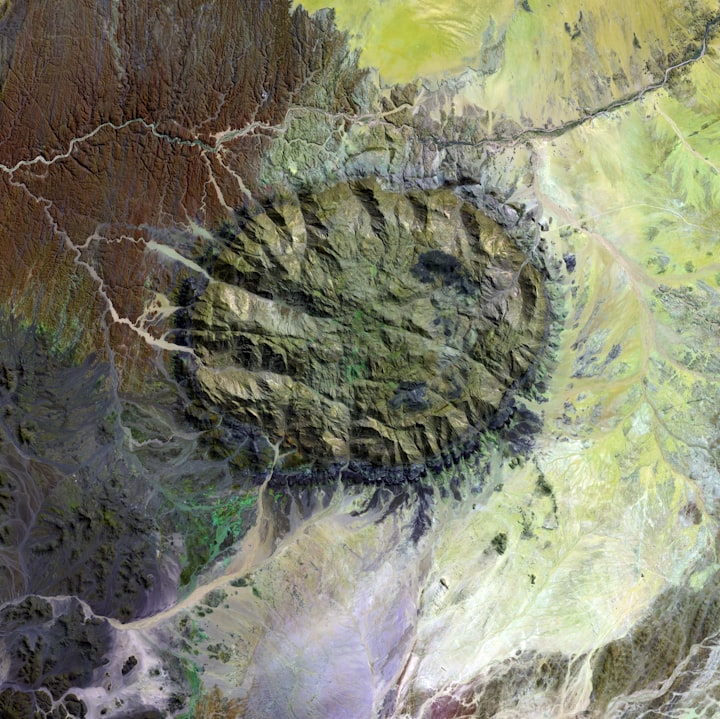Exploring the Earth's Natural Wonders
The Fascinating History and Geography of the World's Natural Wonders

I. Introduction
Natural wonders are natural phenomena or formations that are extraordinary and breathtaking due to their size, beauty, or other unique qualities. Examples of natural wonders include the Grand Canyon, the Great Barrier Reef, Mount Everest, and the Amazon Rainforest.
It is important to preserve natural wonders because they are a valuable part of our planet's natural heritage and provide countless benefits to humans and the environment. Natural wonders provide resources that sustain human life, such as clean air, fresh water, and food. They also offer opportunities for recreation, education, and scientific study. Preserving natural wonders helps to protect biodiversity, maintain natural processes and functions, and mitigate the impacts of climate change.
II. The Grand Canyon
Location: The Grand Canyon is located in Arizona, United States.
Physical features: The Grand Canyon is a massive canyon that was formed by the Colorado River over millions of years. It is 277 miles (446 km) long, up to 18 miles (29 km) wide, and more than a mile (1.6 km) deep. The canyon is known for its dramatic and colorful rock formations, as well as its steep walls and winding paths.
History: The Grand Canyon has a long history of human habitation and use. Native American tribes, such as the Hualapai and Havasupai, have lived in and around the canyon for centuries. The canyon has also been a popular destination for tourists and adventurers for many years.
III. Yellowstone National Park
Yellowstone National Park is located primarily in the state of Wyoming, United States, although it also extends into Montana and Idaho. It is the oldest and one of the largest national parks in the United States.
Yellowstone is known for its stunning physical features, including mountains, forests, canyons, and geysers. The park is home to the highest concentration of geysers in the world, including Old Faithful, which is one of the most famous geysers and erupts regularly. Other unique features of Yellowstone include hot springs, mud pots, and fumaroles, which are openings in the earth's surface that emit steam and gases.
The park is also home to a diverse array of plant and animal life, including grizzly bears, wolves, bison, elk, and more. It is a popular destination for outdoor enthusiasts, who come to enjoy activities such as hiking, camping, fishing, and wildlife viewing.
IV. The Great Barrier Reef
The Great Barrier Reef is located in the Coral Sea, off the coast of northeastern Australia. It is the world's largest coral reef system and is made up of thousands of individual reefs and hundreds of islands.
The Great Barrier Reef is known for its stunning physical features, including its vibrant colors and diverse array of marine life. The reef is home to a wide variety of species, including over 1,500 species of fish, 400 species of coral, and thousands of other plants and animals. It is also home to many threatened and endangered species, such as the dugong and the green sea turtle.
The Great Barrier Reef is a popular destination for tourists, who come to snorkel, dive, and explore the reef's many wonders. It is also an important economic resource for Australia, providing income through tourism and fishing. However, the reef is facing numerous threats, including climate change, pollution, and overfishing, which have led to declines in the health of the reef.
V. Mount Everest
Mount Everest is the highest mountain in the world, reaching an elevation of 29,029 feet (8,848 meters) above sea level. It is located in the Himalayas, on the border between Nepal and Tibet.
Mount Everest is known for its challenging and extreme physical features, including its high altitude, steep slopes, and harsh weather conditions. The mountain is covered in snow and ice year-round, and is subject to strong winds and low oxygen levels.
The history of attempts to climb Mount Everest dates back to the early 20th century. The first successful ascent of the mountain was made by Sir Edmund Hillary of New Zealand and Tenzing Norgay, a Sherpa of Nepal, in 1953. Since then, thousands of people have attempted to climb the mountain, and many have lost their lives in the process. Mount Everest continues to be a popular and challenging destination for experienced climbers.
VI. The Amazon Rainforest
The Amazon Rainforest is a vast tropical rainforest located in South America, primarily in Brazil but also extending into Peru, Colombia, and other countries. It is the largest rainforest in the world and is home to a staggering array of plant and animal life.
The Amazon Rainforest is known for its dense vegetation and high levels of biodiversity. It is home to an estimated 400 billion trees, representing 16,000 different species. The rainforest is also home to a wide variety of animals, including jaguars, capybaras, tapirs, anacondas, and hundreds of species of birds and insects.
The Amazon Rainforest is an important economic and cultural resource for the countries it is located in, providing resources such as timber, rubber, and medicine. However, the rainforest is under threat due to deforestation and other human activities, which have led to declines in the health of the ecosystem.
VII. Conclusion
In conclusion, the Earth is home to many natural wonders that are extraordinary and breathtaking due to their size, beauty, or other unique qualities. These wonders include the Grand Canyon, Yellowstone National Park, the Great Barrier Reef, Mount Everest, and the Amazon Rainforest. Each of these wonders is unique and offers its own set of physical features, plant and animal life, and cultural significance.
It is important to protect and preserve these natural wonders for future generations. Natural wonders provide countless benefits to humans and the environment, including resources that sustain human life, opportunities for recreation and education, and a sense of awe and wonder. Protecting and preserving natural wonders helps to ensure that they will be around for future generations to enjoy and appreciate.





Comments
There are no comments for this story
Be the first to respond and start the conversation.